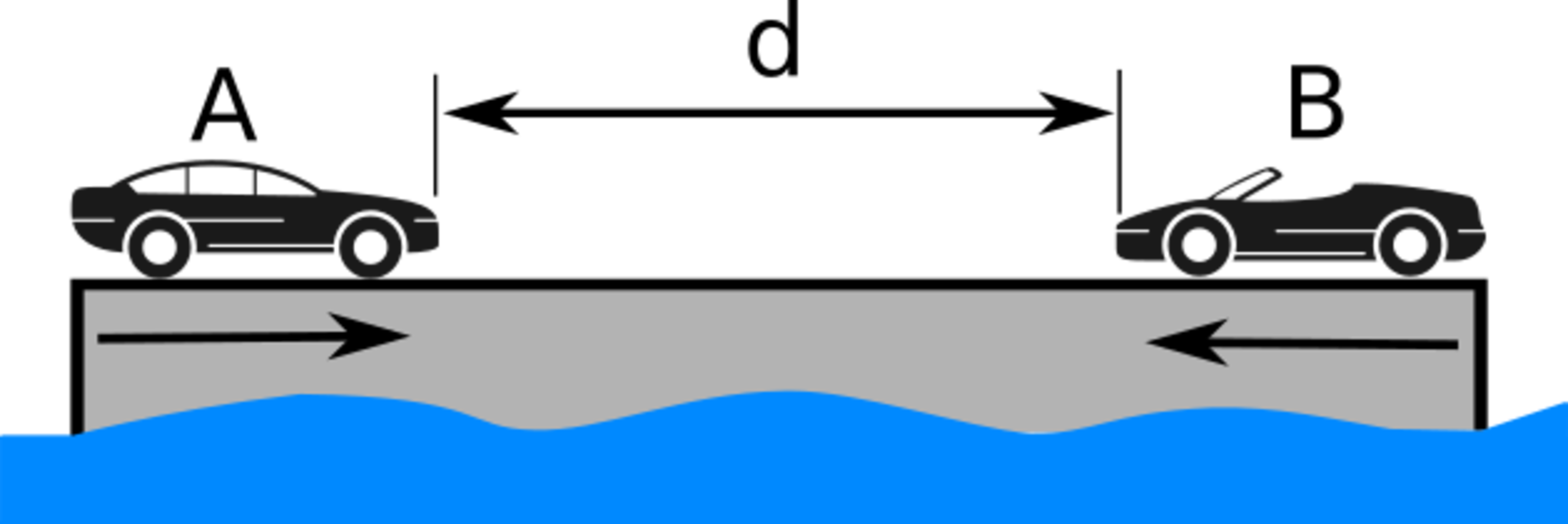Cars colliding on a barge - part I
-
Conservation of momentum: A linear momentum of a body can be calculated as where is a mass and is a velocity of the body. In a closed system (one that does not exchange any matter with its surroundings and is not acted on by external forces) the total momentum is constant. This fact is known as . Suppose that particles can interact (e.g. collide) with each other. The conservation of momentum of particles can be expressed as: where denotes the velocity of an i-th particle before and denotes the velocity of an i-th particle after the interaction between particles.
-
Relative motion: When you are walking in a bus which moves with a certain velocity , your velocity relative to chairs in the bus is different from the one with respect to passing trees outside the bus. Your velocity with respect to the trees is the sum of the velocity of the bus and your velocity with respect to the bus, which can be written as: .
The task
A barge of a mass transports two cars A and B of masses and respectively. They are placed at the distance away from each other. They drive off with accelerations and respectively. Each one accelerates until it reaches a constant velocity with respect to the barge. What is the velocity of the barge shortly before the impact of the two cars? Include the sign of the number.
Assumptions: The barge initially at rest. Any resistances are neglected. The cars are treated as mass points. Given: kg, kg, kg, , , , m.

The answer is -0.0577.
This section requires Javascript.
You are seeing this because something didn't load right. We suggest you, (a) try
refreshing the page, (b) enabling javascript if it is disabled on your browser and,
finally, (c)
loading the
non-javascript version of this page
. We're sorry about the hassle.
Initially the whole system including two cars and the barge is at rest, which means that the total momentum equals zero. As the cars start to move, their momentum change but the overall momentum must be zero, therefore the barge starts to move. Just before the collision of the cars, they have the same velocity v \underline{with respect to} the barge. Additionally, the barge and two cars on it move with velocity v L . The total sum of momenta can be expressed as (note that the car B has negative velocity because it moves to the left while car A moves to the right):
m A v − m B v + ( m A + m B + m L ) v L = 0
because the momentum is conserved and it was zero in the beginning. Solving this equation for v L one gets:
v L = − m A + m B + m L ( m A − m B ) v = − 0 . 0 5 7 7 s m .
The minus sign indicates that the barge will move to the left.